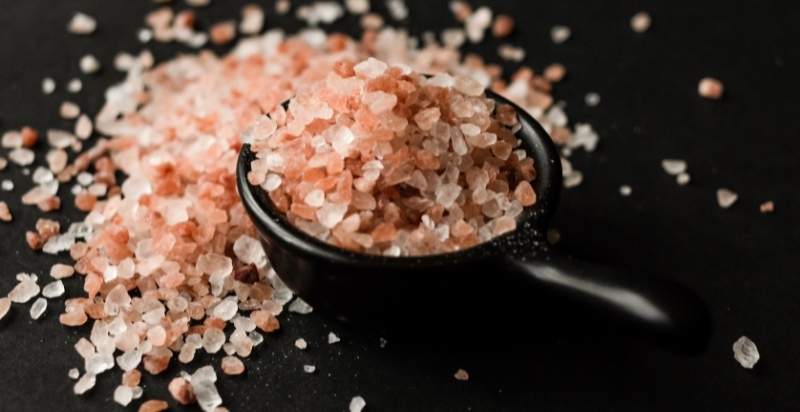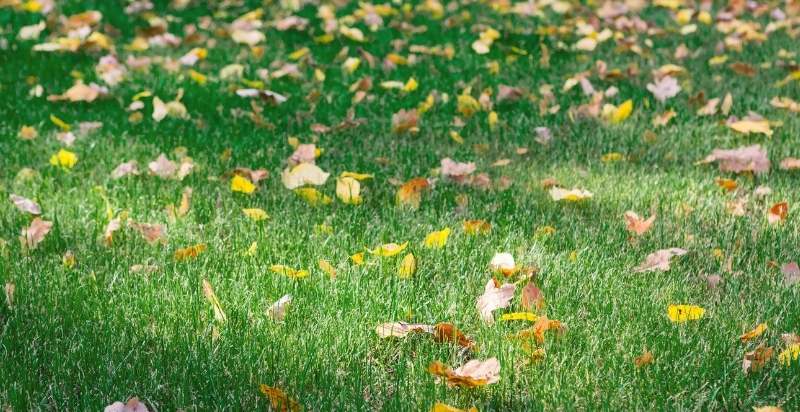It’s a hot summer day, and your lawn looks dry. So, you give it a little boost by putting salt on the grass. But then you start to wonder, is this a good idea? Will the salt hurt my grass or even kill it?
If you’re thinking about using salt to kill grass, you should know a few things. This article will discuss everything you need to know about putting salt on grass, including how it works and what kind of salt to use. We’ll also provide tips on applying salt for the best results.
What Does Salt Do To Grass?
Generally speaking, salt is bad for grass. That’s because salt is a desiccant, which means that it absorbs water. So, when you put salt on your lawn, it will take up water from the grass and soil, leaving the plants without the moisture they need to survive.
In addition, salt can also damage the roots of grass, making it more difficult for the plant to take up nutrients and water. This can lead to yellowing and browning of the grass, as well as thinning and patchiness. In extreme cases, too much salt can even kill grass entirely.
So, if you’re thinking about putting salt on your lawn, it’s important to be aware of the potential risks. But there are also some benefits to consider, and let’s look at both sides of the issue.
The Pros Of Putting Salt On Grass
There are a few potential advantages to using salt on your lawn. For example, salt can:
- Help to control weeds. Salt can kill both broadleaf and grassy weeds by damaging their roots and preventing them from taking up water.
- It can be harmful to the environment. When salt enters the soil, it can make its way into groundwater and rivers, where it can be harmful to plants and animals.
- Act as a natural fertilizer. This is because salt contains chloride, one of the key nutrients plants need to grow.
Of course, it’s important to use salt sparingly, as too much can damage your grass. But if used correctly, salt can be a helpful tool for keeping your lawn healthy and weed-free.
The Cons Of Putting Salt on Grass
In addition to the potential risks we mentioned earlier, there are a few other downsides to putting salt on grass. For example:
- It can be harmful to pets. If your pet ingests salt, it can cause vomiting, diarrhea, and even seizures. So, keeping them off any areas where you’ve applied salt is important.
- It can be challenging to remove. Once the salt has been applied to an area, it can be tough to remove. This is because salt crystals tend to stay in place once deposited. As a result, you may end up with a patch of dead grass that’s difficult to revive.
- It can be harmful to the environment. When salt enters the soil, it can make its way into groundwater and rivers, where it can be harmful to plants and animals.
How Does Salt Kill Grass?
Now that we’ve looked at the pros and cons of putting salt on grass, you might wonder how exactly salt kills plants.
As we mentioned earlier, salt is a desiccant, which means that it absorbs water. So, when you put salt on your lawn, it will take up water from the grass and soil, leaving the plants without the moisture they need to survive.
In addition, salt can also damage the roots of grass, making it more difficult for the plant to take up nutrients and water. This can lead to yellowing and browning of the grass, as well as thinning and patchiness. In extreme cases, too much salt can even kill grass entirely.
What Kind Of Salt Should You Use?
If you’ve decided that you want to put salt on your lawn, the next question is what kind of salt to use.
Rock salt is the most common type of salt used for this purpose, also known as halite. Rock salt is inexpensive and easy to find, making it a popular choice.
However, rock salt can harm the environment, so if you’re concerned about its impact, you may want to consider using another type of salt instead. One option is solar salt, which is produced by evaporating seawater. Solar salt is less likely to harm vegetation than rock salt, making it more eco-friendly.
Another possibility is Epsom salt, which is made up of magnesium sulfate. Epsom salt can be effective at killing weeds, but it’s important to use it carefully, as it can also damage grass if used in too high of a concentration.
Ultimately, the best type of salt to use on your lawn depends on your specific goals and needs. If you’re not sure what kind of salt to use, it’s a good idea to consult with a lawn care expert before moving forward.

How Much Salts Should You Use?
As we mentioned earlier, it’s important to use salt sparingly, as too much can damage your grass. But how much is too much?
There is no definitive answer to this question, as the amount of salt you need to use will vary depending on the type of grass you have, the climate you live in, and your specific goals.
Generally, it’s best to start with a small amount of salt and increase it gradually until you achieve the desired results. This will help to minimize the risk of damaging your lawn.
How Should You Apply Salt to The Lawn?
Once you’ve decided what kind of salt to use and how much to use, the next step is to apply it to your lawn.
There are a few different ways, but the most common method is simply sprinkling the salt over the affected area. You can do this by hand or with a spreader.
If you’re using a spreader, it’s important to calibrate it properly before applying the salt. This will help to ensure that you’re using the right amount of salt and that it’s being evenly distributed.
Once you’ve applied the salt, water the area thoroughly, which will help the salt dissolve and reach the roots of the weeds.
You may need to reapply salt every few weeks or months, depending on the severity of the problem and your desired results.
When Should You Apply Salt to Grass?
The best time to apply salt to grass is in late fall or early winter, and this is because the weather is cooler and the plants are dormant. Applying salt during this time will give it a chance to work its way into the roots before the plant starts growing again in spring.
The plant will likely recover if you apply salt to grass in spring or summer. This is because the weather is warmer, and the plant is actively growing. The salt won’t have as much time to work its way into the roots so the plant can bounce back.

What Are the Potential Risks of Applying Salt to the Lawn?
As we’ve seen, there are both benefits and risks to putting salt on your lawn. So what are some of the potential risks that you should be aware of?
One of the biggest dangers of using salt is that it can harm other plants in your yard and the weeds you’re trying to kill. Applying salt carelessly can easily spread beyond the affected area and damage your flowers, shrubs, and other vegetation.
Another risk is that salt can pollute the soil and groundwater, leading to problems for you and your neighbors.
Finally, salt can damage concrete, asphalt, and other hard surfaces. If you’re not careful, it can even eat away at your home’s foundation.
Before applying salt to your lawn, all of these risks are important. If you’re not sure whether the benefits outweigh the risks, it’s a good idea to consult with a professional before moving forward.
Conclusion
Putting salt on your lawn can be an effective way to kill weeds. However, using salt carefully is important, as too much can damage grass, plants, and hard surfaces. When used properly, salt can be a safe and effective way to keep your lawn weed-free.
Now that you know about putting salt on grass, you’re ready to start! Remember to be careful when using salt, and you should have no problem getting rid of the grass in your yard.
- Everything You Wanted to Know About Red Tamarillos - June 2, 2025
- A Guide to Tulips: Everything You Need to Know & More… - June 2, 2025
- Guanabana: Description, Flavor, Benefits, And Uses - May 27, 2025
